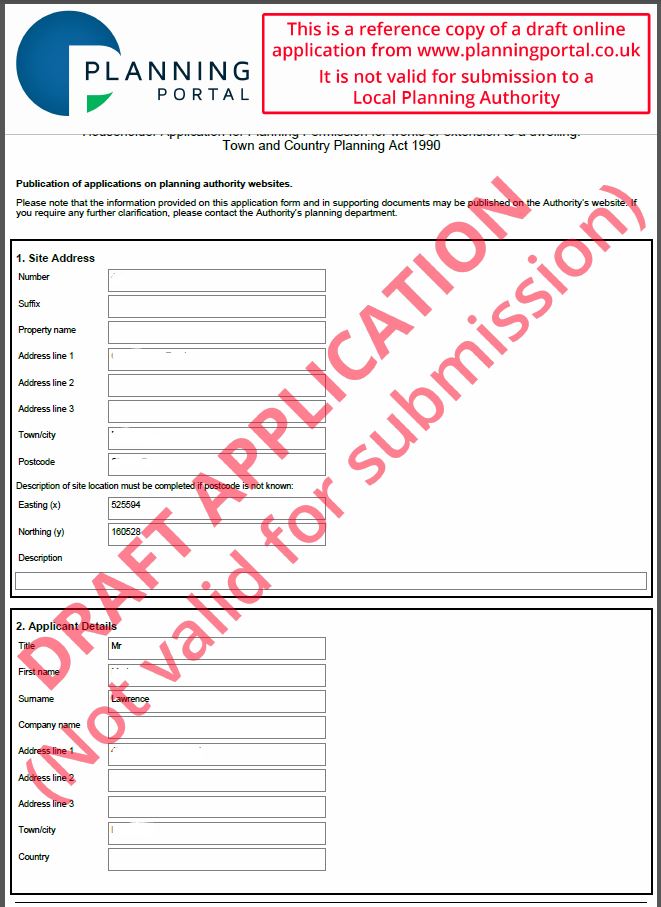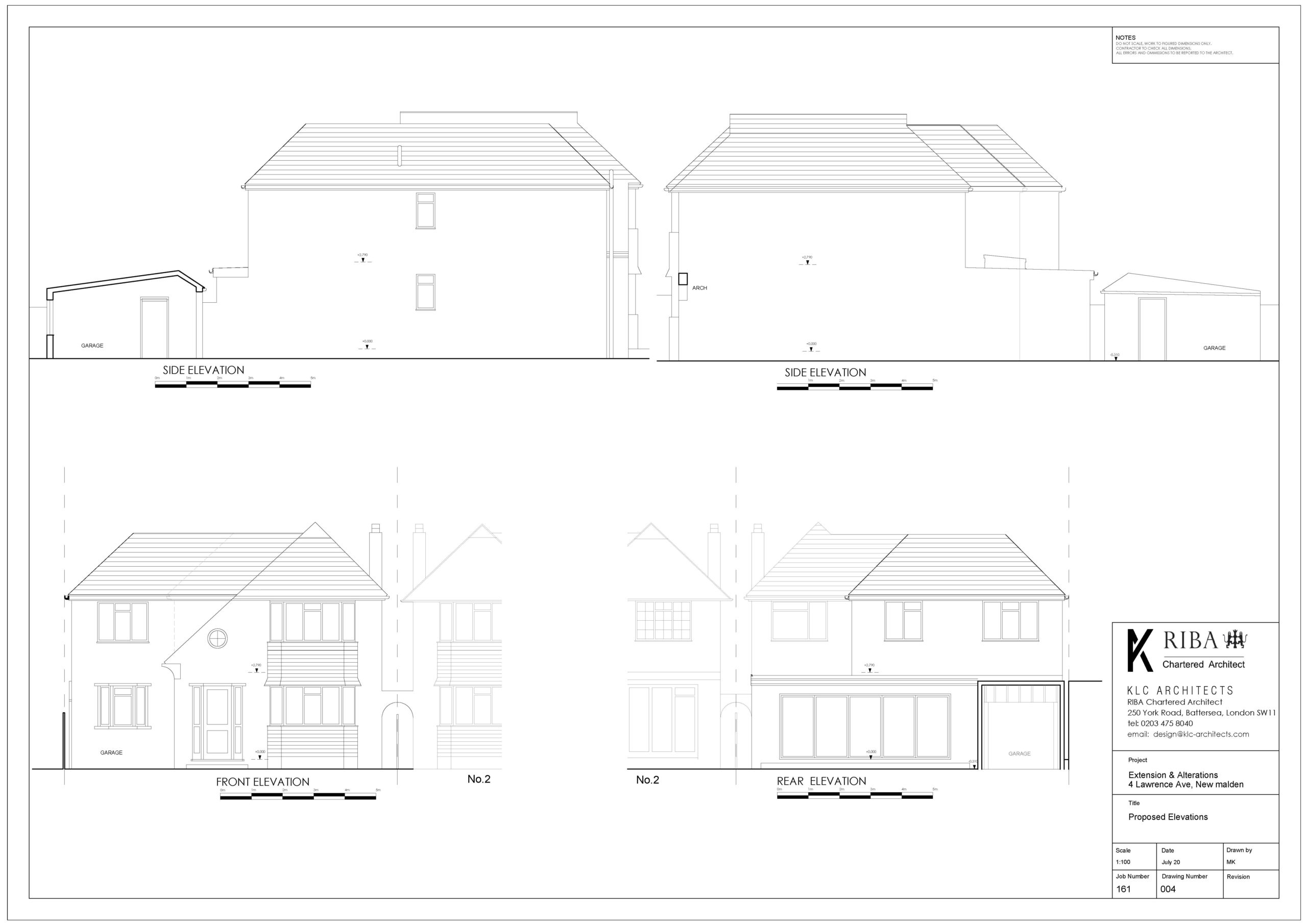Planning permission explained
With the needs of growing families, growing hobbies, and growing communities, one increasingly popular home improvement project is the extension a house.
Here at KLC Architects, as residential architects will take a look at your existing structure and try to work out the possibilities. Then, we’ll sit down with you to collaboratively create a concept for the extension you’re dreaming of to create- ideally- your dream space.
We’ll listen to your ideas, show you an example and concept images, and then create your ideal concept with our computer-generated visualizer which will search for your ideal colour, material, angles preferences. When we’re done, we’re sure you’ll like what you see.
What may not be obvious is that development also includes work such as the construction of a boundary fence or a garden shed, the formation of a basement, the conversion of a house into flats, the insertion of a replacement shop front or the display of advertisements including estate agents’ boards; and the internal alteration of a listed building
Permitted Development and Deemed Consent
Although the planning system controls all types of development it would be very frustrating if you had to apply for consent every time you wanted to make any change or alteration. KLC Architects can assist you with the type of works you would like to prepare under permitted development or certificate of lawfulness. That is why the central government passed regulations that grant permission for certain types of development without the need to apply to the local planning authority The ‘General Permitted Development Order’ (often shortened to GPDO) specifies what sort of building and engineering work is allowed without permission (known as permitted development or PD rights). The Control of Advertisement Regulations detail what sort of advertisements can be displayed without consent (called Deemed Consent). The ‘Use Classes Order’ explains when you can change to a certain use without permission. If your proposed development does not meet the criteria specified in these regulations then you must apply to the Council for consent.
Prior Approvals
In 2013 the government introduced legislation to allow larger extensions to be built (6m deep for semi-detached and terraced houses and 8m deep for detached houses).
These extensions don’t need planning permission, provided that the neighbours don’t object. For each of these ‘’prior approval” applications, the council must notify the neighbours of the house, telling them of the application. They then have 21 days to make comments, if they object, the planning department can make a decision on the application. If no objection is received then the extension can be built (subject to other consents like Building Regulations)
Other Applications
At the time that the 1990 Planning Act was passed into law, the central government also passed another act that gave details about the special controls that apply to listed buildings and conservation areas. This act is known as The Planning (Listed Buildings and Conservation Areas) Act 1990’ and it also specified how an area of special architectural or historic interest’ could be conserved by designating it as a conservation area.
Listed building consent
The 1990 listed building and conservation area act also specified that buildings of a ‘special architectural or historic interest’ should be preserved and that lists of such buildings should be kept; and that listed building consent to make any alteration to, or demolish, a listed building or structure should be obtained from the council. This means that if you wanted to remove a chimney breast in a listed house you would need listed building consent but not planning permission
How can I check what is permitted development?
There is a restriction on alterations to some dwelling houses in Conservation Area and an Article 4 direction to remove permitted development rights to convert houses into small HMO’s is worth checking. Conservation areas also have restrictions on permitted development rights such as a ban on roof extensions or works to any tree without prior consent or notification.
Certificate of Lawfulness
KLC Architects can assist you with the type of works you would like to do under permitted development or certificate of lawfulness. If you have checked the Planning Portal or the legislation and you are still unsure about whether or not your proposal requires planning permission or is permitted development then you may seek formal confirmation by making an application for a certificate of lawful development or use. You can apply for this certificate before you start the work or after it is finished. It is not compulsory to make any such application but if you complete the work and the council subsequently determines that permission was required, the planning enforcement team may request that you make an application for retrospective permission or restore the land or buildings to their former condition
Article 4 Directions and conservation areas
It should be noted that local planning authorities have the ability to remove permitted development rights. An order to withdraw rights is known as an Article 4 direction.
Pre-Application Advice
The local authority has a pre-application advice service for all planning proposals and encourages you to discuss your plans with us before submitting a planning application. This will provide an opportunity to steer projects in the right direction and ensure better quality applications are submitted. KLC Architects can assist you with the submission of a pre-application advice application form and liaise with the local authority.
Advice given is by planning officers and other professionals that will assess your planning application, giving you more certainty as to what you need to do to receive permission.
Why ask for advice?
- You’ll have a better understanding of the policies applying to your proposal and of any key issues to address before submitting an application.
- It will help you prepare proposals for submission, which should be handled more quickly and be more likely to result in a positive outcome.
- They’ll help identify whether you need specialist input at an early stage.
- It may avoid the need to prepare and submit amended plans, as it is not always possible to amend a proposal after it is submitted.
- You’ll know if your proposal is clearly unacceptable saving the cost of making an application.
- For major applications, it will help identify early opportunities for local community input and awareness, and the timing of a decision.
What will you get?
- A meeting with a planning officer and written advice on your proposal.
- Information on relevant policies and guidance.
- A summary of the planning history and constraints for the site.
- Advice on the estimated timescale to process the application.
- The information required to make a valid application.
- The information required to make a valid application.
- Information on the Community Infrastructure Levy and if appropriate the likely heads of terms and estimated costs for planning obligations
- Details about who will notify about the application and guidance on consultation and involving the local community and elected representatives
How do I request advice?
KLC Architects can complete and submit a pre-application advice request form and liaise with the local authority. You will need to pay the relevant fee. We shall include drawings of any proposal and provide as much information as possible as the more detail provided, the more specific the council’s advice will be.
How much does it cost?
The cost of obtaining advice varies depending on the nature and scale of the proposal. A list of the fees for different categories of development is given on the Council’s website. For larger or more complex proposals where a number of meetings are likely to be needed, we recommend entering a Planning Performance Agreement (PPA) with the Council.
Need help?
If you have any questions about how to use the pre-application service or obtain planning permission, please contact us at design@klc-architects.com
HowTo Make A Planning Application
Once we have sought pre-application advice; will be guided through the process of a formal
You can make an application online using Planning Portal at planningportal.co.uk This service is privately run and will advise you about the application(s) that you need to make according to your proposed development, submit electronic copies of drawings and supporting documents, and pay online. However, as KLC Architects are experts in this field, we can submit the relevant information to support your application and notify you of the planning statutory fee


What information do I need to support my application?
- Your application form needs to be accompanied by scaled drawings or plans showing all relevant aspects of the proposal and giving measurements in metric,
- including measurements showing distances between existing and proposed buildings. The plans need to be clear and accurate and show the layout and appearance of the property as existing and also with the proposed changes. You must also include a site plan that shows your property in relation to its surroundings so that we can identify its exact location. The fee will depend on the type of works you are proposing; without the fee your application is invalid and will not be assessed.
We would encourage applications to be submitted electronically using the Planning Portal website.
The Planning Portal has a fee calculator that can be found at
Factors that would affect budget
Process Of a Planning Application
When you submit your application, KLC Architects will liaise with the council who will inform us to acknowledge that they have received it. If you have submitted your application with all the appropriate information it will be assigned to a case officer whose contact details will be set out in the letter If there is important information missing from your application, such as the correct fee or reasonable drawings, your application will be held in abeyance (invalidated). If that is the case, they will write to us explaining clearly what information you will need to submit in order for your application to be registered.
Who else is involved?
The council will write to your immediate neighbours explaining your proposal and asking for their comments. Your neighbours will have 21 days to respond to this consultation letter and submit their comments. This is the statutory minimum timeframe for consultation. Whilst they will accept comments made between the end of the statutory consultation period and the date when they make the decision, officers will have less time to compile any comments made. KLC architects liaise with the planners throughout the process, this way you are assured as we are on standby to make any alterations the planners require in order to achieve a positive outcome decision.
Who decides whether planning permission should be granted or not?
How your application is decided is determined by the complexity and acceptability of the proposals when considered against planning policies. The council has to take into account comments received from neighbouring residents as well as from other organisations such as the London Mayor the Environment Agency or Historic England, depending on the size and type of application. Approximately 95% of all the planning applications submitted to the council are determined by senior officers in accordance with the council’s agreement of delegation. The remaining 5% of planning applications are dealt with by the councilors who make up the council’s Planning Committee. Planning applications dealt with by the Committee will normally be large and complex with legal obligations under section 106, or those which are a departure from the development plan.
There are three basic types of decisions that can be made:
Grant Permission
In most cases this will be subject to conditions that are listed on the decision notice. For example, a condition that you must commence work within 3 years of the date of your grant of planning permission.
Refuse Permission
This means that you have been refused permission. This does not mean that it is the end of the road for your proposals! You have the option to discuss revisions to your proposal with the case officer and submit a new application to hopefully overcome the reasons for refusal, or you may wish to appeal against the council’s refusal of your application to the Planning Inspectorate. A second application with the same character or description may not require a further fee if submitted within 12 months of the date of refusal.
Defer
For some cases at Planning Committee, a decision will be deferred if it is felt that a balanced final decision cannot be made as a result of the absence of important information that needs to be taken into account If this happens your application will be held in abeyance, and the case officer will guide you through what extra information you need to submit before a decision can be made.
Conditions and obligations post-decision
As part of a planning permission the Council will apply conditions that ensure that the development will be in accordance with the legislation and the development plan. The condition that is applied to the majority of permissions imposes a limit on how much time can pass between the date of the decision and the date of the start of work on site. If your application is for retrospective permission then this condition is obviously not applicable. Other regularly used conditions relate to the materials to be used to construct a building and the hours of operation of a newly approved use.
S106
For major applications (such as those which propose to build more than 10 houses) the Council may decide that your application should only be approved if you make an extra contribution, such as providing off-site affordable housing, improving local traffic safety, or nearby public open spaces. In these instances, you will be required to sign a S.106 Agreement.
CIL
The Mayor of London introduced a levy on development in London Boroughs in April 2012 which boroughs collect on behalf of the Mayor.
Appeals
If you are dissatisfied with a refusal decision or think that any of the conditions are unreasonable you can appeal to the Secretary of State. In either case before doing this, we recommend speaking to the Planning Officer who dealt with the application to see if any alternative proposal might be more acceptable.
If you do decide to appeal, you must do so within six months of the date of the decision for most types of application. However, if it is a house extension you must appeal within 12 weeks from the date of decision, and within two months if it relates to an advertisement application. Use of our pre-application advice service is recommended as this will help identify any issues to address prior to submitting an application” after recommended before you submit your application and thus reduce the chance of refusal and the need to appeal.
How to appeal
There is information on the decision notice and also the government’s Planning Portal on how to appeal.



KLC Architects have a comprehensive portfolio of work, which we aim to update on a regular basis to give you a feel of the diverse range of work being commissioned and completed.
We have worked with a number of Local Authorities across the country and in particular, have a great deal of experience working with all the London Authorities.
We liaise with the Planning Officer and Conservation Officer and other parties to make the process as smooth as possible in obtaining the required permissions and statutory requirements

architecture
KLC Architects can provide services to submit applications from;
- New Builds
- Extensions
- Renovations
- Re-modeling

design
Typical types of permissions include Full Planning Permission, Certificate of Lawful Use or Development, Listed Buildings Consent, & Conservation Area Consent from

Project Management
We prepare drawings and submit applications to the Local Authority’s Planning Department to obtain permission.
